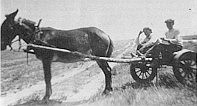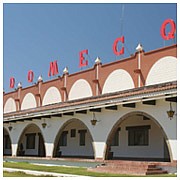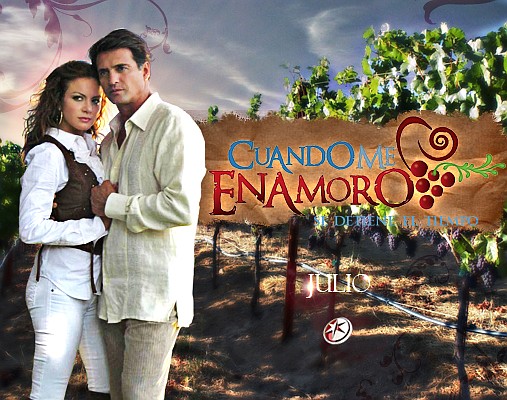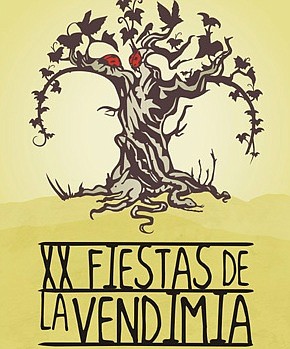 Facebook
Facebook
 X
X
 Instagram
Instagram
 TikTok
TikTok
 Youtube
Youtube

Imagine a valley filled with vineyards surrounded by olive trees. The weather is dry and warm and there’s hardly any wind. There are only a couple of paved roads and people mostly walk or drive on dirt roads bordered with shrubbery. The sounds and sights of the country are subtle: birds, mountains, desert plants — wait, there’s also drama: a turkey vulture devours a squirrel. Oh, well.
One could be standing in California or it could be Italy, but this place is Mexico; actually, it’s Ensenada, but without the breeze of the Pacific. The place is Valle de Guadalupe, a region with a Mediterranean climate where 80 percent of Mexican wine is produced. The valley is the same size as Napa Valley, but Napa has 40,000 acres of vineyards. Compared to other regions, Mexico’s production is still small. In all of the different wine-producing regions of Baja, including San Vicente Valley, Guadalupe Valley, and Santo Tomas Valley, only 6200 acres are used for wine production.
The history of Guadalupe Valley has been touched superficially by few historians; the original population was indigenous, mainly Kumeyaay. There were also Dominican missionaries, but they didn’t stay for long. In 1904, a group of Molokan Russians colonized parts of the valley and with them came the first grapevines.

During the 1950s, groups of farmers demanded farming land from the government and created ejidos. The ejidos were groups that collectively owned land, which was given to them by the government in order to promote agriculture. At the beginning of the ejido era in the valley, they grew alfalfa, wheat, and other crops. In 1927, an Italian named Angelo Cetto came to Baja California and started to explore the valley. He grew different kinds of grapes and founded a company that mainly focused on the production of brandy. In the 1940s, Cetto produced one commercial wine, but it wasn’t until the late 1980s that the company began concentrating on wine. The serious wine industry in Baja is fairly young, 20 years old.

Now, L.A. Cetto is the largest wine company in Mexico, with a production that exceeds one million cases annually; right behind are Pedro Domecq and Santo Tomás, which produce 200,000 and 50,000 cases, respectively, every year. These companies are the main exporters of Mexican wine and the most involved in international wine competitions.
Any Warehouse Can Be Turned into a Boutique
The Valle de Guadalupe is considered a laboratory of experimental wine production because there are so many varietals being grown: Zinfandel, Cabernet, Grenache, Chardonnay, Merlot, Syrah, Sauvignon Blanc, Malbec, Sémillon, Tempranillo, Chenin Blanc, Mourvèdre, Petit Verdot, Carmenere, Muscadelle, Nebbiolo, and many more. There are at least 40 different kinds of grapes producing wine in the valley. Thomas Egli from Casa de Piedra says: “It’s a valley that has huge diversity. You find a wide range of French, Spanish, and Italian varieties, even German and Swiss. Since it’s a wine country without a long tradition of winemaking, there’s a lot of innovation. There are no rules, and you find a huge range of blends, which for a traditionalist might sound strange: for instance, what about a Tempranillo blended with Cabernet Sauvignon?”
The potency and concentration of flavors in Mexican wine come from the way the grapes are grown. Ambitious winemakers submit the vines to intense pruning, which diminishes production but adds richness and complexity to the wine; this technique and others have won many medals for Mexican wines. Another factor that makes Baja’s wine different from the production in other parts of the world is that the dryness of the weather makes Baja’s grapes less exposed to pests, so the need to fumigate drops to almost zero. Egli says, “[Wine] quality is acquired in the vineyard. Therefore, we apply a rather classical, respectful enology: we interfere as little as possible but as much as necessary.”

Since the ’90s, the Mexican market was invaded with cheap Chilean, Argentinean, and French wines. There’s a well-known aspect of certain Mexicans’ character that is called malinchismo; these people, called malinchistas, prefer anything that comes from outside of Mexico. (Malinche was an indigenous woman in central Mexico who served as guide and interpreter to Cortez in his conquest of Mexico.) But then, there’s a patriot inside every Mexican. The coexistence of these traits creates a contradictory collective personality. The malinche side of the Mexican welcomed foreign wines to be sold in Mexico at cut-rate prices. Young wine-drinkers would ban Mexican wine because of its price and because they thought that the foreign production was better. Still, right now there are some good restaurants, particularly in Mexico City, that only list foreign wines. But, little by little, the quality of the local product is gaining a reputation, and although the price barrier is still high and the government doesn’t help (there’s a 25 percent tax on wines, which are considered luxury items), there are good bottles sold for $8 to $20.
Winemaking in Mexico is not an easy enterprise. There are many factors against it: taxing, exporting regulations, ambiguity and uncertainty in property ownership, and misconceptions with water rights. Also, the valley’s dry weather and its mild winters (which winemakers rave about) come with a price: there’s little water. Lack of water has been a problem among all those who have used the valley for farming, including the Indian tribes who feel cornered by some of the wineries. Lately there has been mild criticism against winemaking in the valley. Historian Rogelio Ruiz says, “Winemaking is an expensive activity that requires a big investment. It has become a trend, and we can say there’s a boom. The new producers will hardly be able to compete further than in the boutique circle. I believe that in most cases it’s a matter of snobbism or personal satisfaction.”
With all of its disadvantages, there are many individuals that have decided to take the risk. The Guadalupe Valley now gathers around 80 winemakers; Monte Xanic, Tres Mujeres, Casa de Piedra, Bibayoff, Doña Lupe, and Vinisterra are a few of the many with a small artisanal production.

Switzerland-born enologist Christoph Gartner founded Vinisterra, a small winery that’s located in San Antonio de las Minas. He came from Switzerland to work for Santo Tomás, and he produced ambitious projects such as a binational wine called Duetto, which brought together grapes from the Santo Tomás winery and from Wente Vineyards in California. When asked about the reason he decided to move to Baja in 1996, Gartner says he believes in the potential of the region and that he liked the challenge. “There’s a spirit of experimentation and freedom in the new world; there’s an absence of being chained to the previous industrial production. And we have the climate on our side; the aridity and warmth of the valley gives us wines of high concentration and maturity.”
Guadalupe, the Newest Telenovela Star
The majority of Baja wine-country visitors are local middle-class Mexican citizens, cultured and well-educated between the ages of 35 and 45 who can afford the rather expensive local production. One of the tour guides at L.A. Cetto mentioned that the winery receives around 800 visitors on a weekend, with only about 10 of them from the U.S. According to the numbers of the Comité Provino, last year during harvest season the Guadalupe Valley received 45,000 visitors, but only 3 percent were from the United States.

In order to attract consumers, some wineries offer free tours through the vineyards and wine-tastings at little or no cost. They have open areas that are used for weddings, concerts, and picnics. Many families and groups of friends spend their Sundays enjoying the local produce and wine at what is called the Ruta del Vino. There are bed-and-breakfast hotels and tiny lodges, even luxury camping. The valley’s popularity is growing and, recently, it became the main backdrop for Cuando Me Enamoro (“When I Fall in Love”), a popular Mexican soap opera. Many ensenadenses worked as extras. The telenovela brought popularity, but it also attracted a less-sophisticated consumer.
The biggest event of the year happens in August, during harvest season. Fiestas de la Vendimia offers concerts, wine-tastings, and food competitions. Most of the events are expensive (a ticket can cost from $50 to $300) and some are invitation-only gatherings, but there are also public events. In downtown Ensenada, in front of Bodegas de Santo Tomás, a popular nighttime street festival brings together art from many Baja artists. Local produce and gourmet food is sold, and lots of live music is presented on indoor and outdoor stages. Many thousands gather for this wine festival. It is attractive, indeed, but when in the late hours the hordes of men and women drinking straight from the bottle become a huge zigzagging crowd, one can only wonder what is so wrong with exclusivity after all.



Imagine a valley filled with vineyards surrounded by olive trees. The weather is dry and warm and there’s hardly any wind. There are only a couple of paved roads and people mostly walk or drive on dirt roads bordered with shrubbery. The sounds and sights of the country are subtle: birds, mountains, desert plants — wait, there’s also drama: a turkey vulture devours a squirrel. Oh, well.
One could be standing in California or it could be Italy, but this place is Mexico; actually, it’s Ensenada, but without the breeze of the Pacific. The place is Valle de Guadalupe, a region with a Mediterranean climate where 80 percent of Mexican wine is produced. The valley is the same size as Napa Valley, but Napa has 40,000 acres of vineyards. Compared to other regions, Mexico’s production is still small. In all of the different wine-producing regions of Baja, including San Vicente Valley, Guadalupe Valley, and Santo Tomas Valley, only 6200 acres are used for wine production.
The history of Guadalupe Valley has been touched superficially by few historians; the original population was indigenous, mainly Kumeyaay. There were also Dominican missionaries, but they didn’t stay for long. In 1904, a group of Molokan Russians colonized parts of the valley and with them came the first grapevines.

During the 1950s, groups of farmers demanded farming land from the government and created ejidos. The ejidos were groups that collectively owned land, which was given to them by the government in order to promote agriculture. At the beginning of the ejido era in the valley, they grew alfalfa, wheat, and other crops. In 1927, an Italian named Angelo Cetto came to Baja California and started to explore the valley. He grew different kinds of grapes and founded a company that mainly focused on the production of brandy. In the 1940s, Cetto produced one commercial wine, but it wasn’t until the late 1980s that the company began concentrating on wine. The serious wine industry in Baja is fairly young, 20 years old.

Now, L.A. Cetto is the largest wine company in Mexico, with a production that exceeds one million cases annually; right behind are Pedro Domecq and Santo Tomás, which produce 200,000 and 50,000 cases, respectively, every year. These companies are the main exporters of Mexican wine and the most involved in international wine competitions.
Any Warehouse Can Be Turned into a Boutique
The Valle de Guadalupe is considered a laboratory of experimental wine production because there are so many varietals being grown: Zinfandel, Cabernet, Grenache, Chardonnay, Merlot, Syrah, Sauvignon Blanc, Malbec, Sémillon, Tempranillo, Chenin Blanc, Mourvèdre, Petit Verdot, Carmenere, Muscadelle, Nebbiolo, and many more. There are at least 40 different kinds of grapes producing wine in the valley. Thomas Egli from Casa de Piedra says: “It’s a valley that has huge diversity. You find a wide range of French, Spanish, and Italian varieties, even German and Swiss. Since it’s a wine country without a long tradition of winemaking, there’s a lot of innovation. There are no rules, and you find a huge range of blends, which for a traditionalist might sound strange: for instance, what about a Tempranillo blended with Cabernet Sauvignon?”
The potency and concentration of flavors in Mexican wine come from the way the grapes are grown. Ambitious winemakers submit the vines to intense pruning, which diminishes production but adds richness and complexity to the wine; this technique and others have won many medals for Mexican wines. Another factor that makes Baja’s wine different from the production in other parts of the world is that the dryness of the weather makes Baja’s grapes less exposed to pests, so the need to fumigate drops to almost zero. Egli says, “[Wine] quality is acquired in the vineyard. Therefore, we apply a rather classical, respectful enology: we interfere as little as possible but as much as necessary.”

Since the ’90s, the Mexican market was invaded with cheap Chilean, Argentinean, and French wines. There’s a well-known aspect of certain Mexicans’ character that is called malinchismo; these people, called malinchistas, prefer anything that comes from outside of Mexico. (Malinche was an indigenous woman in central Mexico who served as guide and interpreter to Cortez in his conquest of Mexico.) But then, there’s a patriot inside every Mexican. The coexistence of these traits creates a contradictory collective personality. The malinche side of the Mexican welcomed foreign wines to be sold in Mexico at cut-rate prices. Young wine-drinkers would ban Mexican wine because of its price and because they thought that the foreign production was better. Still, right now there are some good restaurants, particularly in Mexico City, that only list foreign wines. But, little by little, the quality of the local product is gaining a reputation, and although the price barrier is still high and the government doesn’t help (there’s a 25 percent tax on wines, which are considered luxury items), there are good bottles sold for $8 to $20.
Winemaking in Mexico is not an easy enterprise. There are many factors against it: taxing, exporting regulations, ambiguity and uncertainty in property ownership, and misconceptions with water rights. Also, the valley’s dry weather and its mild winters (which winemakers rave about) come with a price: there’s little water. Lack of water has been a problem among all those who have used the valley for farming, including the Indian tribes who feel cornered by some of the wineries. Lately there has been mild criticism against winemaking in the valley. Historian Rogelio Ruiz says, “Winemaking is an expensive activity that requires a big investment. It has become a trend, and we can say there’s a boom. The new producers will hardly be able to compete further than in the boutique circle. I believe that in most cases it’s a matter of snobbism or personal satisfaction.”
With all of its disadvantages, there are many individuals that have decided to take the risk. The Guadalupe Valley now gathers around 80 winemakers; Monte Xanic, Tres Mujeres, Casa de Piedra, Bibayoff, Doña Lupe, and Vinisterra are a few of the many with a small artisanal production.

Switzerland-born enologist Christoph Gartner founded Vinisterra, a small winery that’s located in San Antonio de las Minas. He came from Switzerland to work for Santo Tomás, and he produced ambitious projects such as a binational wine called Duetto, which brought together grapes from the Santo Tomás winery and from Wente Vineyards in California. When asked about the reason he decided to move to Baja in 1996, Gartner says he believes in the potential of the region and that he liked the challenge. “There’s a spirit of experimentation and freedom in the new world; there’s an absence of being chained to the previous industrial production. And we have the climate on our side; the aridity and warmth of the valley gives us wines of high concentration and maturity.”
Guadalupe, the Newest Telenovela Star
The majority of Baja wine-country visitors are local middle-class Mexican citizens, cultured and well-educated between the ages of 35 and 45 who can afford the rather expensive local production. One of the tour guides at L.A. Cetto mentioned that the winery receives around 800 visitors on a weekend, with only about 10 of them from the U.S. According to the numbers of the Comité Provino, last year during harvest season the Guadalupe Valley received 45,000 visitors, but only 3 percent were from the United States.

In order to attract consumers, some wineries offer free tours through the vineyards and wine-tastings at little or no cost. They have open areas that are used for weddings, concerts, and picnics. Many families and groups of friends spend their Sundays enjoying the local produce and wine at what is called the Ruta del Vino. There are bed-and-breakfast hotels and tiny lodges, even luxury camping. The valley’s popularity is growing and, recently, it became the main backdrop for Cuando Me Enamoro (“When I Fall in Love”), a popular Mexican soap opera. Many ensenadenses worked as extras. The telenovela brought popularity, but it also attracted a less-sophisticated consumer.
The biggest event of the year happens in August, during harvest season. Fiestas de la Vendimia offers concerts, wine-tastings, and food competitions. Most of the events are expensive (a ticket can cost from $50 to $300) and some are invitation-only gatherings, but there are also public events. In downtown Ensenada, in front of Bodegas de Santo Tomás, a popular nighttime street festival brings together art from many Baja artists. Local produce and gourmet food is sold, and lots of live music is presented on indoor and outdoor stages. Many thousands gather for this wine festival. It is attractive, indeed, but when in the late hours the hordes of men and women drinking straight from the bottle become a huge zigzagging crowd, one can only wonder what is so wrong with exclusivity after all.
